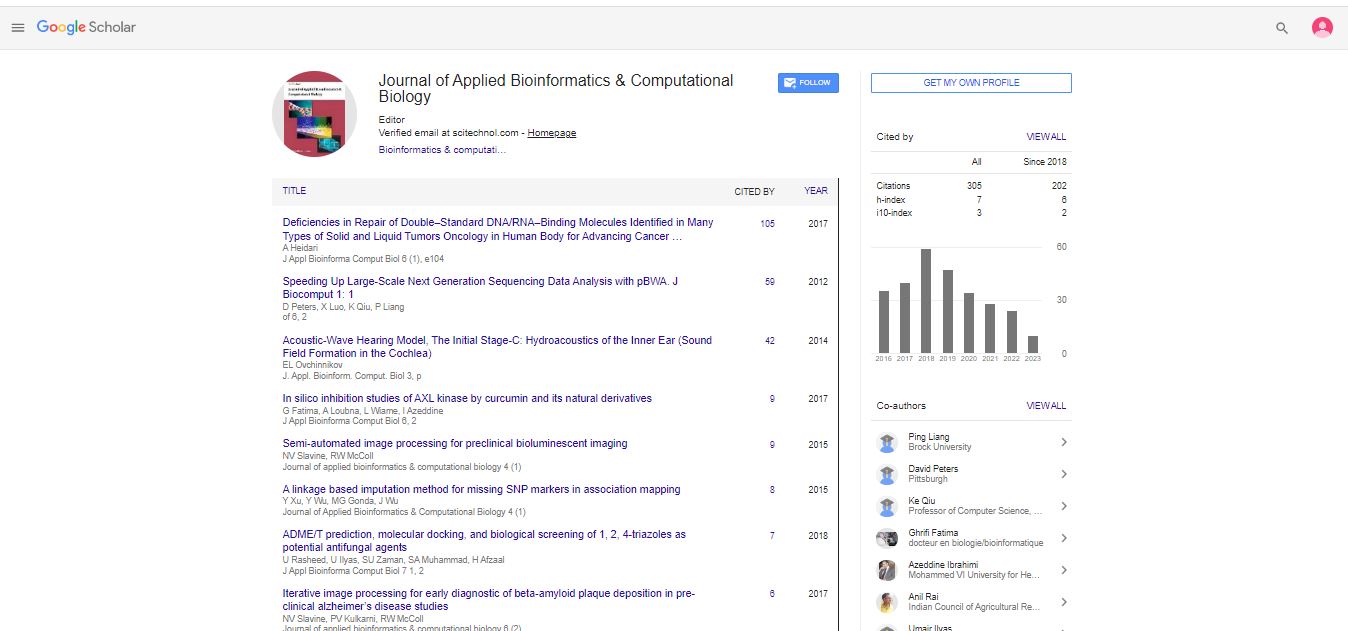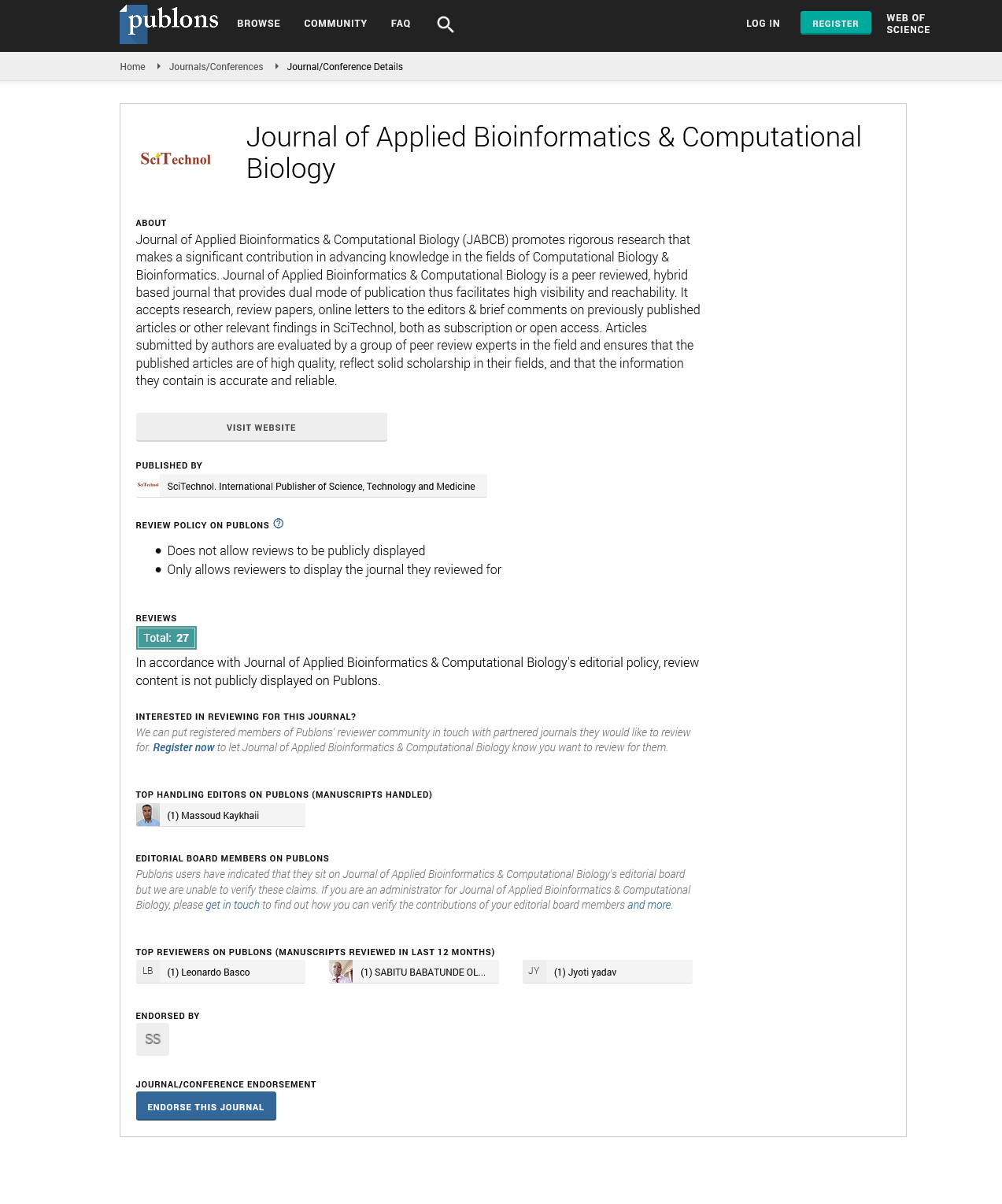Hydralazine induces stress resistance and extends C. elegans lifespan by activating the NRF2/SKN-1 signaling pathway
Hamid Mirzaei
UT Southwestern Medical Center, USA
: J Appl Bioinforma Comput Biol
Abstract
Advances in modern medicine have led to increased life expectancy. As the aging population increases, finding a cure for the age-related cognitive decline is becoming more and more important. A hallmark of neurodegenerative diseases, one of the main pathologies underlying age-related dementia, is the deposition of insoluble proteins in cells of the neuromuscular system causing proteotoxicity. Substantial literature suggests that the primary inducer of proteotoxicity in aging is chronic deterioration of defense machinery including antioxidant, heat shock, and degradation systems. Deterioration of defense machinery create imbalances in aggregation and clearance pathways leading to proteotoxicity by altering aggregate dynamics, localization and aberrant interactions. One of the main targets of toxic proteins aggregates is mitochondria resulting in mitochondrial dysfunction and increased oxidative stress. Nuclear factor (erythroid-derived 2)-like 2 and its Caenorhabditis elegans ortholog, SKN-1, are transcription factors that have a pivotal role in the oxidative stress response, cellular homeostasis, and organismal lifespan. Similar to other defense systems, the NRF2-mediated stress response is compromised in aging and neurodegenerative diseases. Here, we report that the FDA approved drug hydralazine is a bona fide activator of the NRF2/ SKN-1 signaling pathway. We demonstrate that hydralazine extends healthy lifespan (~25%) in wild-type and tauopathy model C. elegans at least as effective as other anti-aging compounds, such as curcumin and metformin. We show that hydralazinemediated lifespan extension is SKN-1 dependent, with a mechanism most likely mimicking calorie restriction. Using both in vitro and in vivo models, we demonstrate that hydralazine has neuroprotective properties against endogenous and exogenous stressors. Our data suggest that hydralazine may be a viable candidate for the treatment of age-related disorders.
Biography
Hamid Mirzaei research is focused on finding the target of novel and FDA approved compounds using a combination of proteomics, computational biology, and biochemistry. Many FDA approved drugs are currently in use without a clear understanding of their mechanism of action. On the other hand, there are quite a few well-characterized natural products with unknown targets. He uses systems biology to understand the drug’s mechanism of action by identifying the target of the drugs and their cellular and organismal phenotypes.
E-mail: Hamid.Mirzaei@utsouthwestern.edu
 Spanish
Spanish  Chinese
Chinese  Russian
Russian  German
German  French
French  Japanese
Japanese  Portuguese
Portuguese  Hindi
Hindi 
